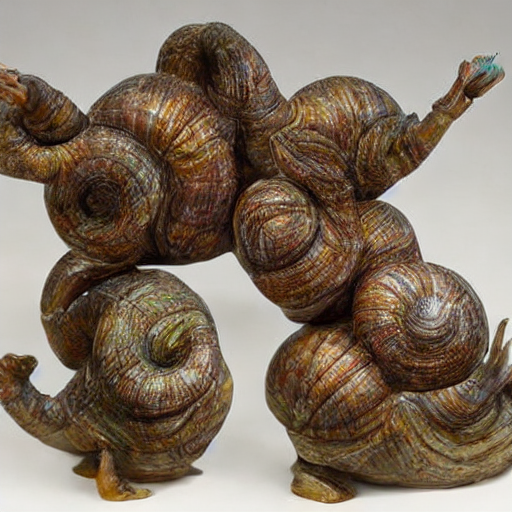

These radioactive snails descend from the common snail but have mutated to grow branching, interconnected shells around long, eel-like bodies. Horsnaus typically live 20-25 years and then die in their shell, which is often too intricate to be reused by another horsnau. While a horsnau shell isn't particularly hard or structurally sound, their toxic, foul-smelling meat deters most would-be predators.
Explore an endless universe of ficticious life on NovelGens.





